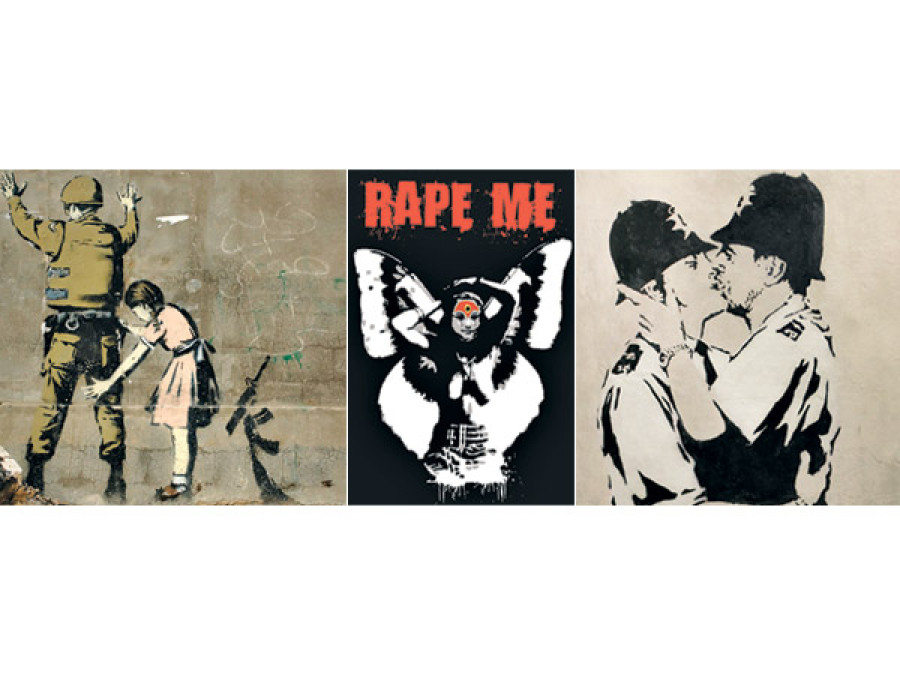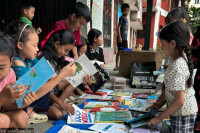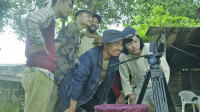Entertainment
The Power of Images
If you are going to make street art, and make a statement while you’re at it, be rigorous in your conception and your execution.
Sophia Pande
My first thought was that I had seen things wrong. I was in a vehicle, there was no traffic, and I wasn’t able to look at the image properly. Still, the work disturbed me immensely, especially in its stark contrast to the other piece of ‘provocative’ street art on the same wall, of two women kissing each other on the mouth, which is cheeky, especially in Nepal, but celebratory, at least for those of us who believe in LGBT rights.
Talking to a few people about it after that first sighting, everyone I spoke with, except for those in the ‘know’ or who had read Sadhu-X’s artist’s statement explaining the work’s inspirations and intentions, expressed their hesitation if not downright outrage. Had someone infiltrated the mostly politically, socially aware Nepali street art scene for their own nefarious purposes? As one friend put it, “I thought some sick right-wing group had come into town”.
Here is the history of the piece: it was commissioned for an exhibition at the City Museum Kathmandu titled #Occupy: An expression of Global Conscience, supporting, among other socially motivated protests, the #Occupy Baluwatar movement, which began on the 28 December 2012, outside the Prime Minister’s residence, to protest the rape of Sita Rai (this is not her real name) who was shamefully robbed and then raped by government officials.
The movement lasted an astonishing 110 days, creating awareness about violence against women and moving people to speak out in words and in images. Sadhu-X (an alias for the artist Aditya Aryal) was one of those inspired to speak out about Nepal’s extraordinary lapses in protecting women against rape, and battery, to name just a few kinds of assault.
Unfortunately, Aryal’s piece does not convey what he intends it to. It does not read as an indictment against the people who would rape a girl child. It does not, unless explained in detail, in words, make people understand that this image is a supposed challenge from the living goddess who means to shame those people who would worship her as a virgin, but would lay hands on another innocent child regardless. This, at least in my mind, is an enormous failure on the part of the artist’s conceptualisation and execution of a piece that ought to convey exactly what it means visually.
Instead of outrage, this piece titillates, and provokes, but not in the way it ought to, which is intellectually. The artist’s choices are inexplicable to me. Why does the Kumari have butterfly wings? Or is she intended to be some sort of angel? Why is she posing in a universal gesture that screams “Look at me”? Why on earth is she topless? As for the words “Rape me”, well, due to the ambiguity of the depiction of the Kumari, the words seem more of an invitation than a public shaming of those who would be so inclined.
It is not for me to tell artists what to make and how to make it. Neither is it my business to demand that street art be painted over. My point is this: if you are going to make street art, and make a statement while you’re at it, be rigorous in your conception and your execution (the image seems blurry to me). If Aryal wanted to create controversy, he has succeeded; if he wants to speak out against rape, he has failed categorically.
One cannot talk about street art without talking about Banksy, the shadowy, politically outspoken English street artist whose sophisticated works are always daring, often very much tongue in cheek, but never misrepresenting his intentions—whatever they may be. There is a reason that he is so famous; it is because he is phenomenally good at what he does in challenging authority, calling out injustice and celebrating impudence. His images are clear—that is why he is great.
We live in a country where art is coming into its own—making political statements of every kind. It is the artist’s responsibility to be self-disciplined, to question their motivations, and to sharpen their tool kits so they can say exactly what they want, instead of being caught in a romantic haze that leads them astray using social commentary as a scapegoat.




 13.12°C Kathmandu
13.12°C Kathmandu










